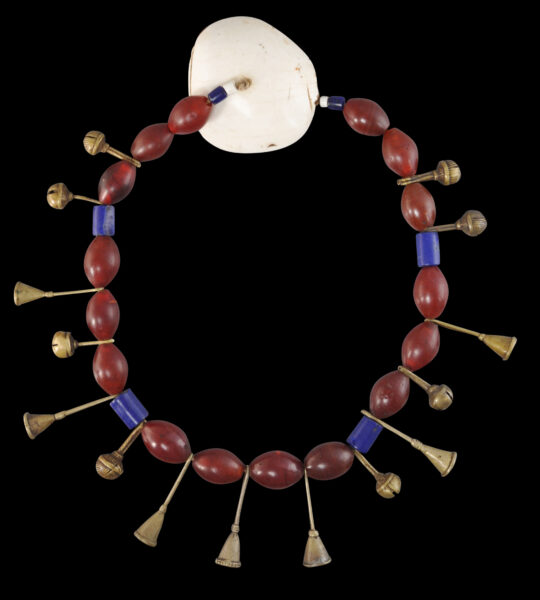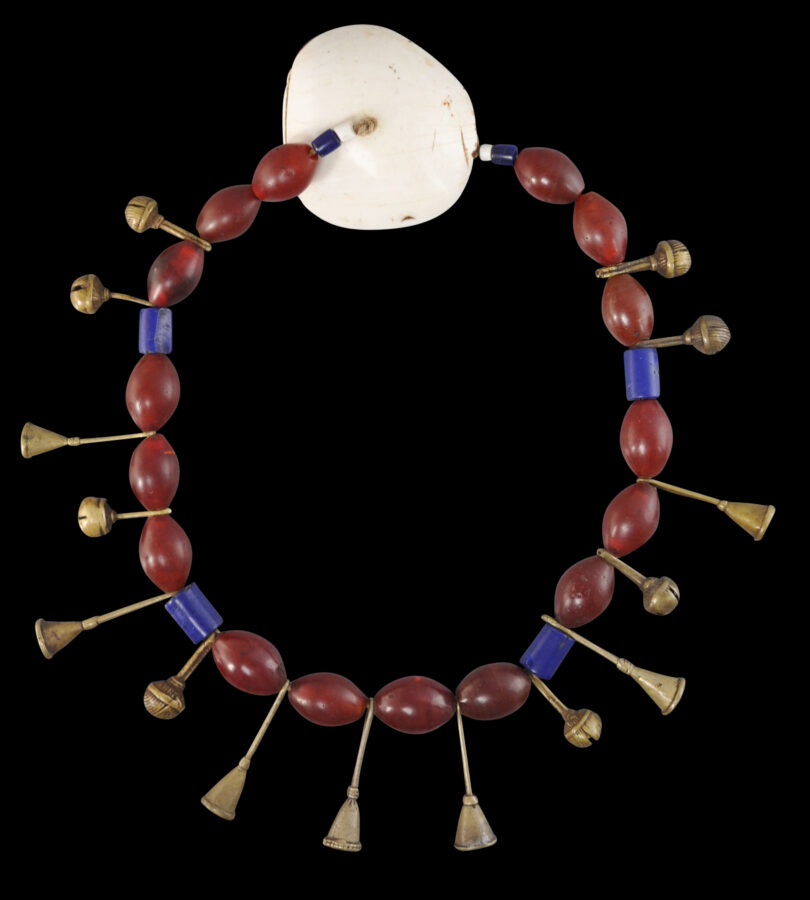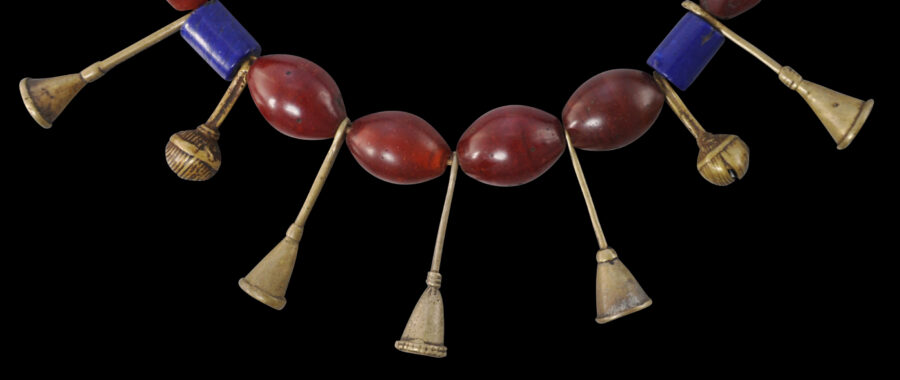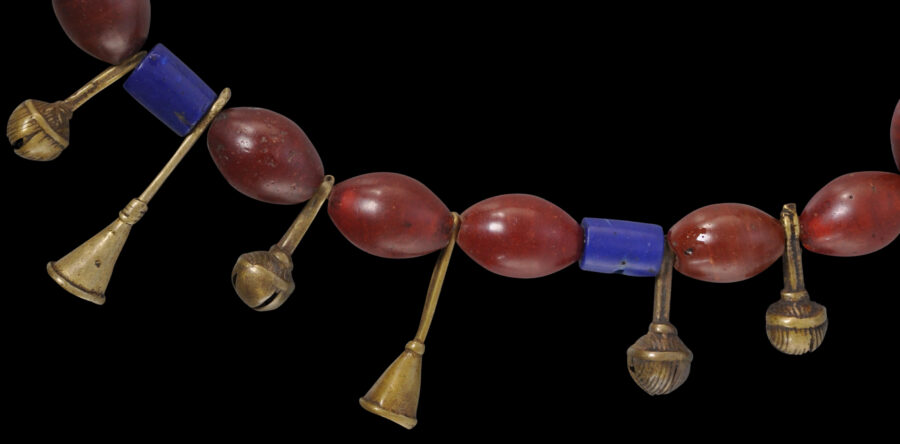This very attractive Naga necklace comprises 16 red glass imitation carnelian beads, 15 brass bell and trumpet-shaped beads, six European blue tile beads, two small white ceramic beads and a chank shell disk and loop closure, all threaded on natural twine.
The brass bell and trumpet beads were cast using the lost wax process and are evenly spaced around the necklace.
The Naga were fond of rare goods that could be bartered from outside their region. Imported trade beads were among their most coveted items. Beaded necklaces were thus very popular as a show of finery but also as a portable means of displaying and carrying wealth. The components that went into making necklaces were regarded as currency items themselves. Beads and necklaces were accumulated as heirlooms and could be passed on as dowries.
A similar example is illustrated in Daalder (2009, p. 338). Others are illustrated in Jacobs (1990, p. 324).
The necklace is in a fine, stable, wearable condition. The individual components have ample evidence of age and wear.

References
Borel, F., The Splendour of Ethnic Jewelry: From the Colette and Jean-Pierre Ghysels Collection, Thames & Hudson, 1994.
Daalder, T., Ethnic Jewellery and Adornment: Australia, Oceania, Asia, Africa, Ethnic Art Press/Macmillan, 2009.
Jacobs, J., The Nagas: Hill Peoples of Northeast India, Thames & Hudson, 1990.
Schmitt, K., ‘The language of Naga ornament: Beads, Bones and Hornbill feathers’, Arts of Asia, July-August 2004.





